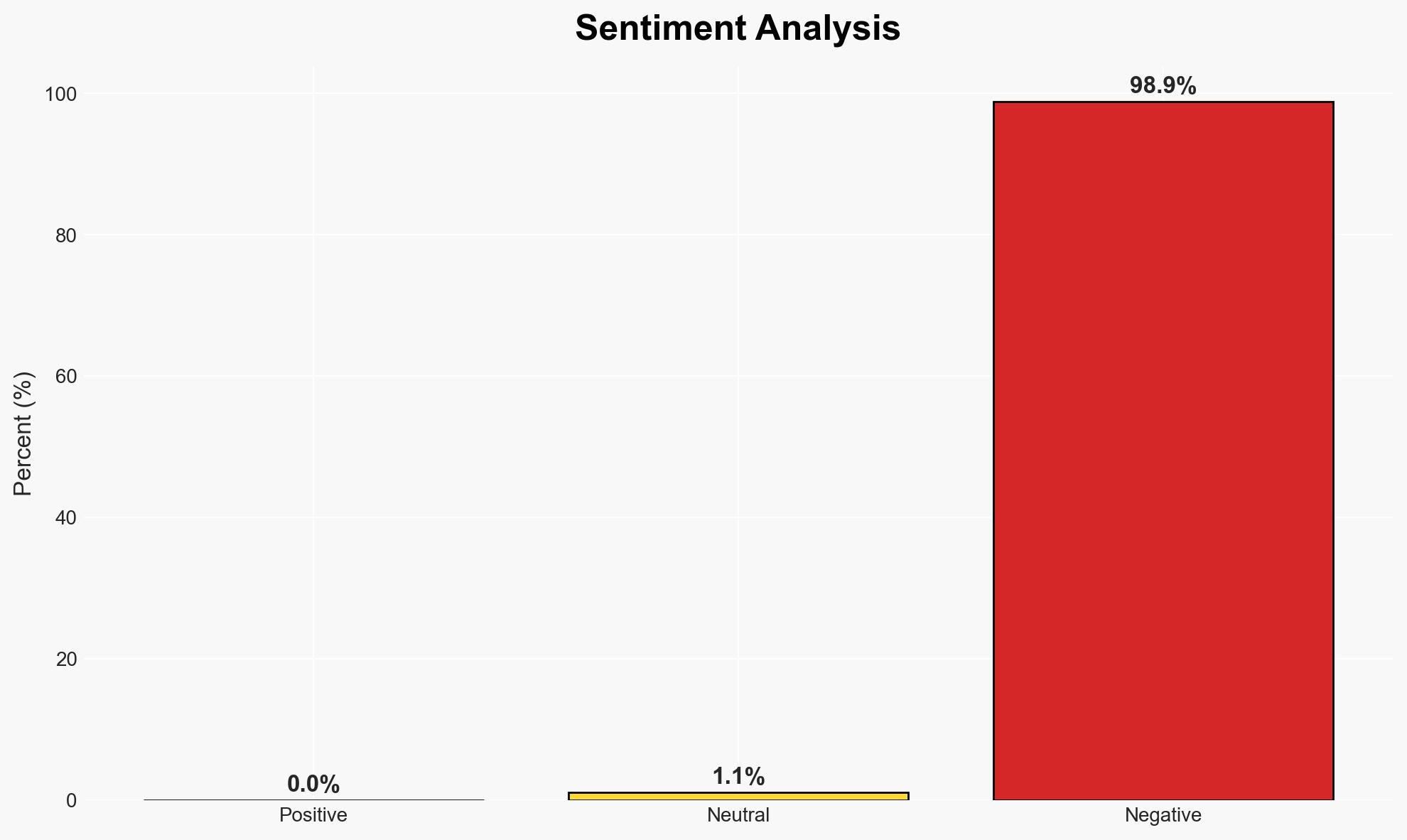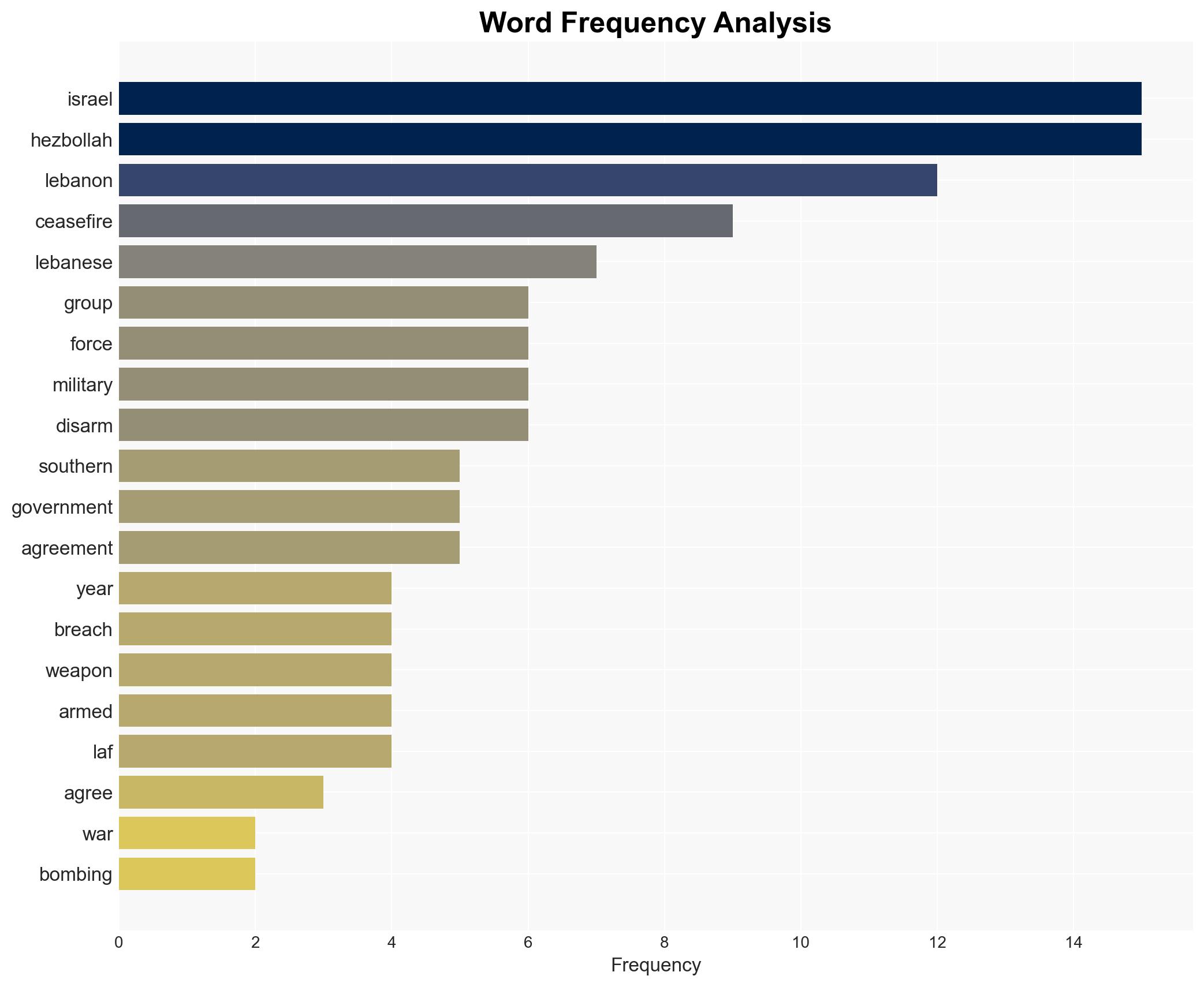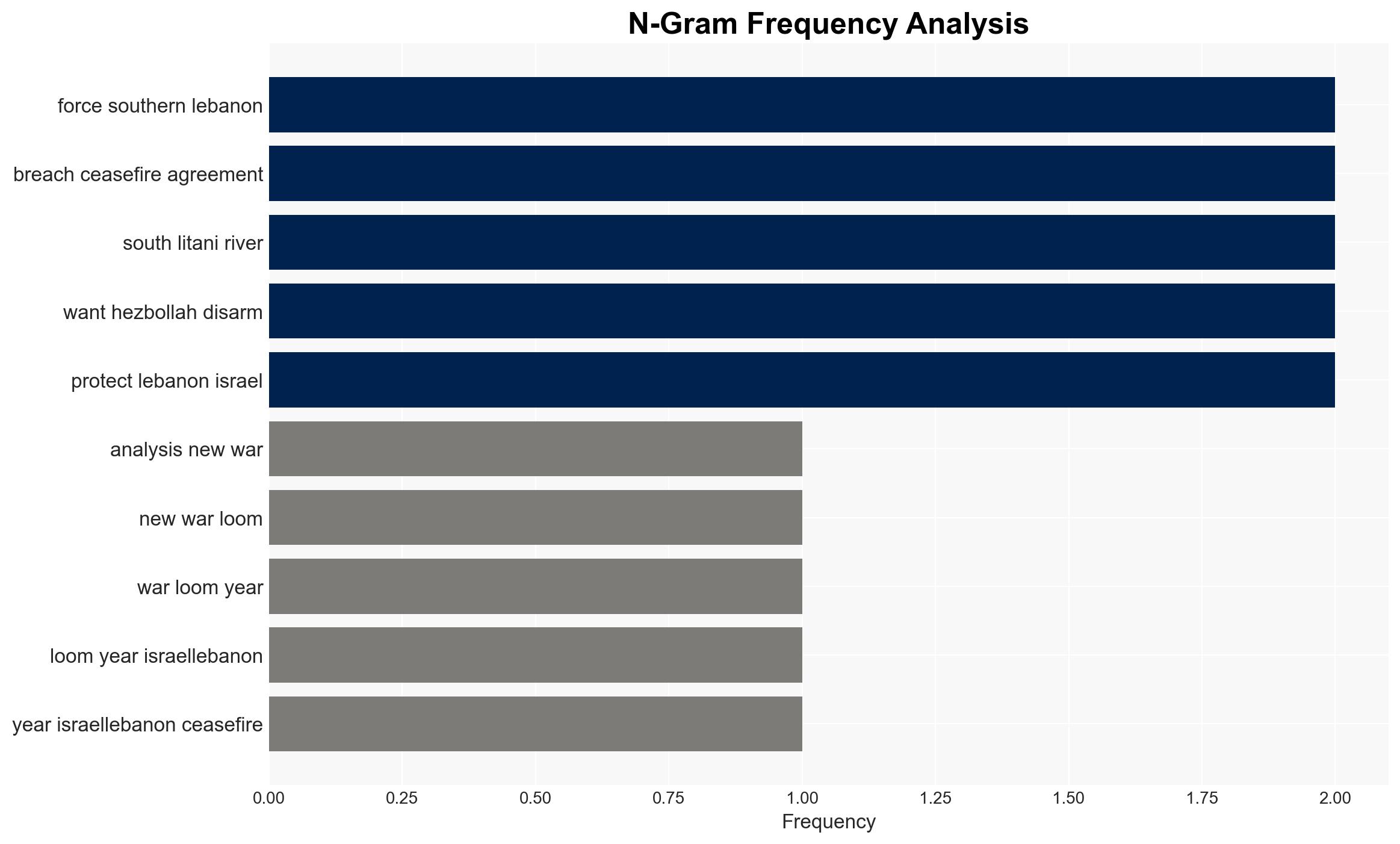Escalating Tensions: Potential Conflict Emerges One Year After Israel-Lebanon Ceasefire Agreement
Published on: 2025-11-27
AI-powered OSINT brief from verified open sources. Automated NLP signal extraction with human verification. See our Methodology and Why WorldWideWatchers.
Intelligence Report: A new war looms one year on from the Israel-Lebanon ceasefire
1. BLUF (Bottom Line Up Front)
The risk of renewed conflict between Israel and Hezbollah is increasing, driven by ongoing ceasefire violations and strategic military posturing. The situation is exacerbated by Hezbollah’s rearmament efforts and Israel’s military responses, with potential regional destabilization. Overall confidence in this assessment is moderate due to incomplete data on military capabilities and intentions.
2. Competing Hypotheses
- Hypothesis A: Hezbollah is actively rebuilding its military capabilities in southern Lebanon, prompting Israel to consider preemptive strikes. Evidence includes reported attempts to rebuild missile sites and smuggle weapons, but lacks confirmation of scale and success.
- Hypothesis B: Israel’s military actions are primarily deterrent, aimed at maintaining pressure on Hezbollah without seeking full-scale conflict. This is supported by Israel’s continued strikes and diplomatic rhetoric, though the risk of miscalculation remains high.
- Assessment: Hypothesis A is currently better supported due to consistent reports of Hezbollah’s military activities and Israel’s explicit security concerns. Indicators such as increased military deployments or diplomatic engagements could shift this judgment.
3. Key Assumptions and Red Flags
- Assumptions: Hezbollah remains committed to its military objectives; Israel perceives Hezbollah as an existential threat; international actors will not significantly alter their current stances.
- Information Gaps: Detailed intelligence on Hezbollah’s current military capabilities and the extent of external support from Iran and Syria.
- Bias & Deception Risks: Potential biases include overreliance on Israeli and Lebanese government sources, which may have vested interests. Deception indicators include misinformation campaigns by involved parties.
4. Implications and Strategic Risks
The ongoing tensions could lead to a broader regional conflict, affecting geopolitical alignments and security dynamics. The situation may also impact global energy markets and refugee flows.
- Political / Geopolitical: Potential for escalation involving regional powers such as Iran and Syria, influencing broader Middle Eastern stability.
- Security / Counter-Terrorism: Increased risk of asymmetric warfare tactics and potential for cross-border terrorist activities.
- Cyber / Information Space: Likely increase in cyber operations and propaganda efforts by both state and non-state actors.
- Economic / Social: Economic destabilization in Lebanon, exacerbating humanitarian conditions and social unrest.
5. Recommendations and Outlook
- Immediate Actions (0–30 days): Enhance intelligence collection on Hezbollah’s military activities; engage in diplomatic efforts to reinforce ceasefire compliance.
- Medium-Term Posture (1–12 months): Strengthen regional alliances and support Lebanese governmental reforms to mitigate Hezbollah’s influence; develop contingency plans for potential conflict escalation.
- Scenario Outlook:
- Best Case: Diplomatic interventions stabilize the situation, preventing further conflict.
- Worst Case: Full-scale conflict erupts, drawing in regional powers and causing widespread instability.
- Most Likely: Continued low-intensity conflict with periodic escalations, maintaining regional tension.
6. Key Individuals and Entities
- Benjamin Netanyahu – Prime Minister of Israel
- Hezbollah – Lebanese militant group
- Lebanese Armed Forces (LAF) – National military force
- United Nations Peacekeeping Force – Monitors ceasefire compliance
- Not clearly identifiable from open sources in this snippet.
7. Thematic Tags
Structured Analytic Techniques Applied
- Cognitive Bias Stress Test: Expose and correct potential biases in assessments through red-teaming and structured challenge.
- Bayesian Scenario Modeling: Use probabilistic forecasting for conflict trajectories or escalation likelihood.
- Network Influence Mapping: Map relationships between state and non-state actors for impact estimation.
Explore more:
National Security Threats Briefs ·
Daily Summary ·
Support us





